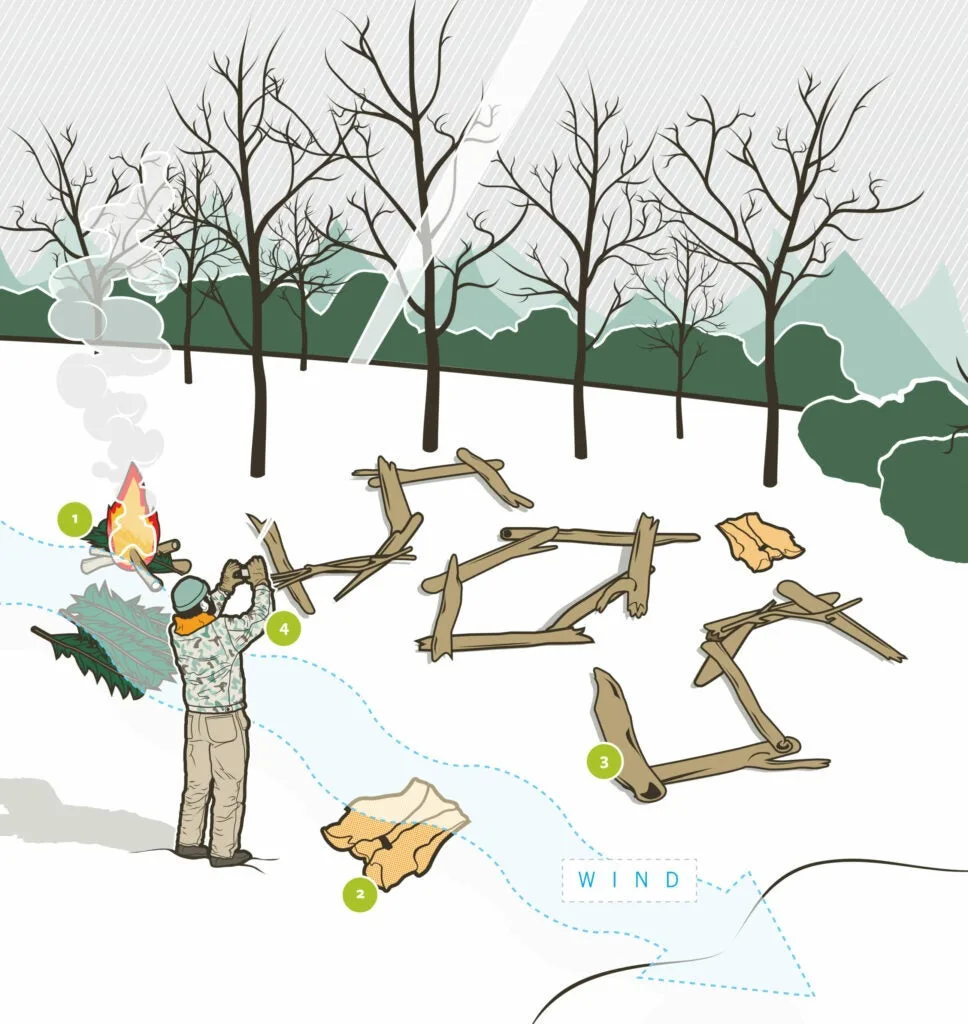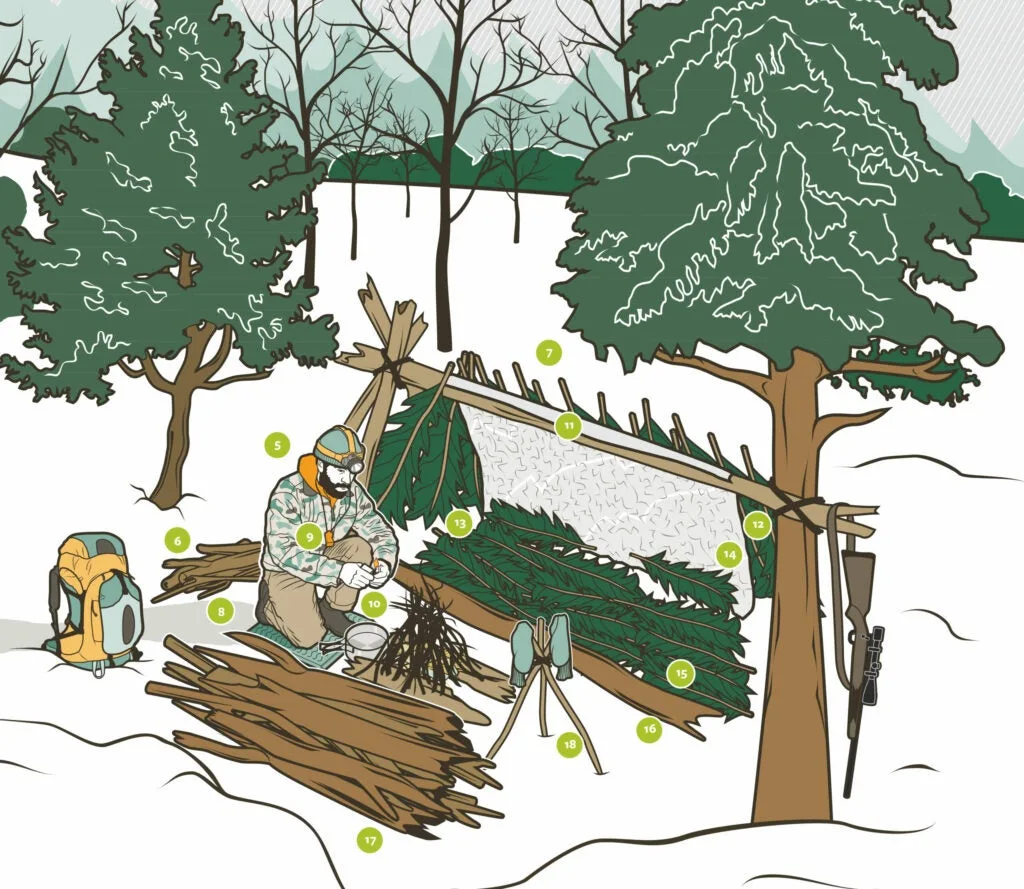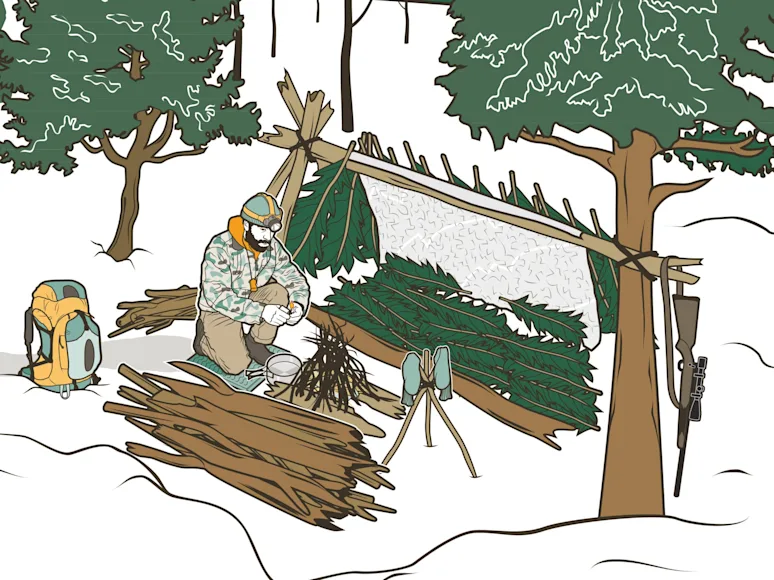
Signaling for help. Dan Marsiglio
+++ Mixed Signals
1 | Build a fire in an open area, such as a ridgetop. Stack green boughs beside it so you’ll be ready to make a smoke signal to alert search aircraft.
2 | Pack extra orange mesh hunting vests. Hang them from small trees or spread them on the snow, where they can be seen from a great distance.
3 | Drag logs to construct an SOS sign with the sides of each letter at least 10 feet long.
4 | Practice aiming your signal mirror so you can direct the flash when SAR aircraft appear. If you don’t have a mirror, you can use a pot, a space blanket, even a credit card. When a SAR aircraft approaches, raise both hands to indicate that you need help. If you need medical care, lie down on your back with your arms stretched above your head.

Building a shelter. Dan Marsiglio
+++ The Ultimate Shelter
5 | Pack a headlamp instead of a flashlight. It leaves your hands free to start the fire.
6 | Gather a big pile of firewood to burn all night. Your supply should include wrist-diameter sticks, plus some 5-foot-long logs.
7 | Night air flows downhill. Pitch your camp in a lee with the opening of your shelter parallel to the wind direction, so it doesn’t fill with smoke.
8 | Pack a square cut from a closed-cell sleeping pad. It insulates you from cold ground. If you don’t have a pad, sit on your pack.
9 | Blow three whistle blasts at regular intervals to alert the search team.
10 | Panic leads to dehydration. A small titanium pot weighs less than an ounce and is vital for melting snow to render warm drinking water.
11 | If you don’t have a tarp, one of the quickest shelters to build is a lean-to that uses a tree branch for the ridgepole. Break or saw branches for the framework, then lace smaller branches through the frame to make the shelter rigid.
12 | Thatch the shelter with branches or pine boughs. Arrange them with tips pointing down to direct runoff. Tilt branches against the thatching to keep it in place.
13 | Bank the lower sides of the lean-to with snow for insulation.
14 | Once you build a fire, it’s unnecessary to wrap up in your space blanket. Instead, tuck its edges into the shelter so the silver film forms a reflecting wall. It will provide warmth and cheery light.
15 | Insulate your body from the ground and snow. Snap branch ends to make a bough bed at least 8 inches thick.
16 | Place a retaining log across the shelter opening. It makes a comfortable seat and blocks the heat of the fire from melting the snow under the bough bed.
17 | Use logs to build a wall in back of the fire, directing the fire’s warmth toward your shelter.
18 | Wet clothes quicken hypothermia. Hang your clothes by the fire to dry.

Under the Tepee Dan Marsiglio
If your hands are too cold to shave fuzz sticks or scrape bark for tinder, try getting your fire started with the following: tiny twigs (a), pine tips with rusted needles (b), and cut strips of a gamebag or your underwear (c); cotton burns fiercely.
Read Next: Best Survival Books






